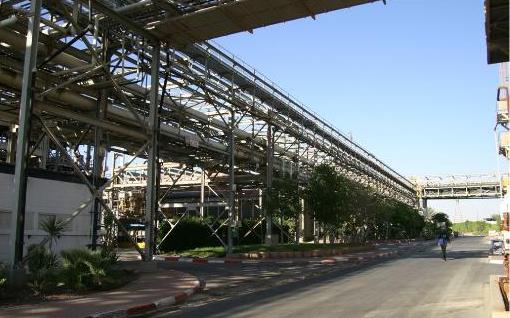The development of researchers at Ben Gurion University led by Dr. Ariel Kushmaro was presented yesterday at a conference that dealt with innovations in the application of environmental technologies in the chemical industry

A unique method developed by researchers at Ben-Gurion University, led by Dr. Ariel Kushmaro from the Department of Biotechnology Engineering, warns against odor nuisances. This was revealed at the "Innovations in the Application of Environmental Technologies in the Chemical Industry" conference, which took place yesterday (Tuesday, March 17), at Ben-Gurion University, in collaboration with the Ramat Hovav Environmental Industrial Council.
This is a unique molecular method for rapid quantification of sulfur-reducing bacteria in the evaporation ponds of the Ramat Hovav Environmental Industrial Council, in order to warn of abnormal amounts of them in the ponds before reaching a situation where there is a potential for odor nuisance. This method is the basis for a policy of controlled discharge of the waste water into the various ponds.
It should be noted that the evaporation ponds of the Ramat-Hovev Environmental Industrial Council are the last stop for the industrial wastewater after a series of treatment processes in the various factories. In the past, due to the activity of sulfur-reducing bacteria in the evaporation ponds, severe odor nuisances were caused by the emission of gaseous hydrogen sulfide into the air. This problem was mostly solved by salting the ponds and consequently suppressing the microbial activity of these bacteria.
As part of the ongoing control and prevention of odor nuisances in the evaporation ponds, the Environmental Biotechnology Laboratory at Ben-Gurion University is engaged in tracking and monitoring sulfur-regenerating bacteria in the ponds. The new unique method was developed as part of the monitoring project being carried out on the site, in order to warn of abnormal amounts in the pools before reaching a situation where there will be a potential for odor nuisances. This method is, as mentioned, a basis for a policy of controlled discharge of the waste water into the various ponds. It should be emphasized that the Laboratory for Environmental Biotechnology in the Faculty of Engineering Sciences at Ben-Gurion University combines microbiologists and engineers specializing in wastewater treatment technologies and environmental pollution monitoring and providing solutions for industry, and is a source of knowledge on this subject in Israel and internationally.
At the conference, for the first time, the three major chemical plants operating in Ramat Hovav Tefah presented their activities and investments for wastewater treatment and emission prevention. The representatives of academia and industry presented, among other things, advanced treatment of industrial waste water, the use of molecular methods to alert against odor nuisances of hydrogen sulfide, treatment of industrial sludge, utilization of technologies to treat emissions from factory chimneys, these are only part of a set of topics that will be presented by representatives of academia and industry.
The Negev presents: academic and practical cooperation - for the environment
The head of the Ramat Hovav Council, Giora Miyhoves, said that the council's investments and other external factors in academic and practical research - for the development and application of environmental technologies make a huge contribution to research and real achievements in the field of environmental quality." The existing and expected environmental improvement in Ramat Hovav and its surroundings is a direct result of the application of environmental technologies, which combine Acquisition of existing knowledge and development and implementation of new technologies in cooperation between academia and the chemical industry in the Negev".
It was reported at the conference that during the first 20 years of its existence, the Ramat Hovav Environmental Industrial Council invests about NIS 8 million per year from its budget to carry out surveys and research in the field of environmental quality. This amount does not include actual expenses and special budgets for the development of research infrastructure, such as drilling and other monitoring measures. The annual budget for the operation of the Environmental Quality Unit is 2 million NIS per year, and an additional XNUMX million NIS per year is added to carry out research and surveys. Current, proactive and periodic air quality surveys are also carried out with the help of laboratories and certified outdoor samples.
Apart from air quality surveys, the council invested approximately NIS 18 million in hydro-geological surveys for underground monitoring, carried out by experts from Ben-Gurion University and the Hebrew University of Israel. The monitoring of the streams: Sachar, Hashur and Besh is carried out every year by the Nature and Parks Authority. Floodwater monitoring downstream, west of Ramat-Hobb is carried out by a team from Ben-Gurion University led by Prof. Yonatan Leron. Prof. Asher Brenner, Dr. Eitan Ben-Dov and Ariel Kushmaro, also from Ben-Gurion University, are conducting research on the use of molecular methods to warn against odor nuisances of hydrogen sulfide.
For more details about the development of a molecular nose for alerting to odor nuisances

One response
If the verb is "warn", the noun for the action is "alert", not "alert".